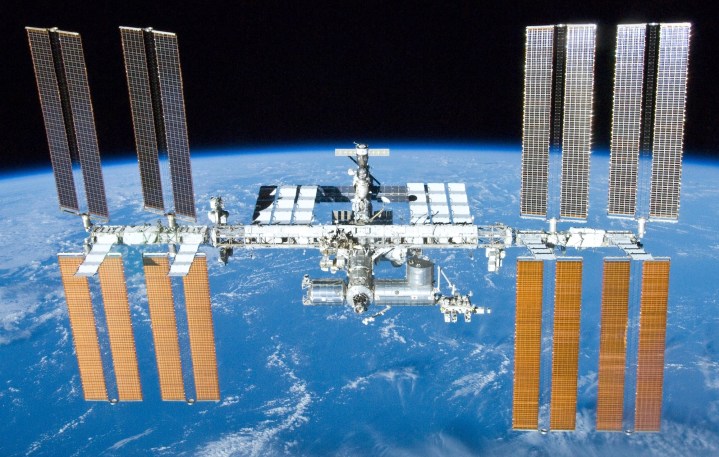
The International Space Station (ISS) orbits Earth 16 times a day, which means that at some point it’s likely to pass over your neighborhood.
Despite being 250 miles above our heads, it’s actually easy to spot the ISS thanks to the reflection that occurs when the sun’s rays bounce off its solar arrays. You just need to know when to look up.
NASA already has a website to help you find out when the orbital outpost is passing overhead, and it’ll also notify you via emails if you input your address.
But on Thursday it made the process a whole lot easier with the launch of a brand new Spot the Station app for iOS and Android.
The app provides additional capabilities and information to make the station sighting experience even more engaging. For example, you can configure it to send a notification as it passes over, and an augmented reality interface makes it easier for users to find the station. You can also use it to capture and share imagery of the station.
The date at the top of the app’s display shows the next time the ISS is viewable from your area. Select the date and you’ll be taken to the Upcoming Sightings page listing all of the approaching dates and times showing when the station is heading your way. You’ll notice that most of the sighting opportunities occur in the early evening or early morning. If you’d prefer not to get the early morning notifications (these sightings will be at around 5 a.m.), then you can block them via a setting on the Upcoming Sightings page.
Back on the main page, you’ll see a 3D representation of Earth showing the current location of the station, together with a line showing where it’s been and where it’s heading. A 2D map below it offers similar information but also shows the regions of day and night.
“Even after 23 years of continuous human presence aboard the International Space Station, it’s incredibly exciting to see the station when you look up at just the right moment,” Robyn Gatens, ISS director, said in a message announcing the new app. “The orbiting laboratory that continues to provide so many unique, tangible benefits for humanity really isn’t that far out of reach.”
Editors’ Recommendations

